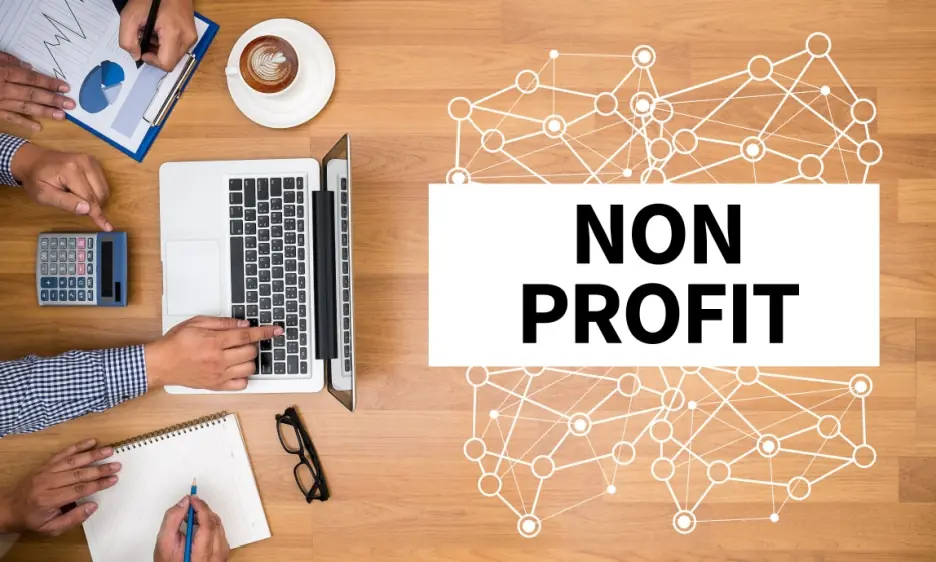Impact Reporting for NGOs: Important Information to Know
 Share
Share
 Copy Url
Copy Url

Impact reporting for NGOs is essential to showcase the incredible work these organizations do. An NGO impact report is a professional document that outlines the organization's impact, transparency, and achievements. By crafting a comprehensive and engaging impact report, NGOs can highlight their success stories and build trust with stakeholders. The impact report format is crucial. It ensures the information is clear and effective. This article will guide you through creating a nonprofit impact report, focusing on professional design and thoughtful content.
In the following sections, we'll dive deeper into impact reporting for NGOs. We'll explore the power and benefits of these reports. We'll also provide tips on planning your NGO impact report. You will learn about the key components of an effective NGO impact report format and get step-by-step instructions on how to write one. By the end of this article, you'll know how to create a compelling impact report that shows your organization's impact and transparency. Let's get started!

What is Impact Reporting for NGOs?
Impact reporting for NGOs is crucial for showcasing their work and achievements. An impact report is a professional document. It outlines an organization's activities, highlighting its impact and transparency. By creating a comprehensive and engaging impact report, NGOs can build trust with stakeholders. These stakeholders include donors and the communities they serve. This report format ensures the information is clear and effective. This is a must for professional communication and evaluation.
The purpose of an impact report is to analyze the progress and outcomes of specific projects or initiatives over a period. It helps check whether the objectives have been met. It also assesses the extent of the social or economic impact achieved. For nonprofits, including detailed information on activities, financial transparency, and success stories can illustrate the organization's impact on the community. This kind of reporting demonstrates accountability. It also helps NGOs plan for the future by setting appropriate goals and tracking progress toward them.

The Power of Impact Reporting for NGOs
Impact reporting for NGOs is a powerful tool that showcases the positive effects of their work. It involves creating comprehensive documents that highlight the outcomes and benefits of an organization's activities. This type of reporting demonstrates transparency and also helps in building trust with donors and the communities served. Here are some key benefits of impact reporting for NGOs:
1. Showcases Achievements and Builds Trust
Impact reporting for NGOs allows organizations to present their achievements. By outlining successes and providing data-backed results, these reports build trust with stakeholders, including donors, volunteers, and beneficiaries. This trust is essential for ongoing support and engagement.
2. Enhances Strategic Planning
A well-crafted NGO impact report helps in strategic planning. By analyzing data from past projects, NGOs can identify what worked and what didn’t. This insight guides future projects, ensuring better outcomes and efficient use of resources. It provides a comprehensive view of the organization’s progress and areas needing improvement.
3. Improves Transparency and Accountability
Impact reporting boosts transparency by detailing how organizations use funds and the impacts they achieve. This reassures donors and other stakeholders that their contributions make a real difference. It also holds the organization accountable for its promises and objectives.
4. Visually Engaging and Informative
Effective impact reports use visuals to make data more accessible and engaging. Charts, graphs, and infographics help convey complex information simply and attractively. This visual appeal makes the reports more readable and impactful. This ensures that everyone easily understands the key messages.
5. Supports Data-Driven Decisions
Comprehensive impact reports provide valuable data that supports informed decision-making. By presenting clear metrics and outcomes, NGOs can make strategic choices about where to focus their efforts and resources. This data-driven approach helps in achieving better results and scaling successful initiatives.
By leveraging the power of impact reporting, NGOs can not only highlight their achievements but also ensure continuous improvement and stronger stakeholder relationships. These reports serve as essential tools for transparency, strategic planning, and effective communication.

Planning Your NGO Impact Report
Planning your NGO impact report involves several crucial steps. Each step helps ensure the report is comprehensive and tells a compelling story. By setting clear objectives, identifying key stakeholders, and determining the report's scope and frequency, you can create a valuable tool for your organization. Let's explore each of these steps in detail:
1. Setting Clear Objectives
Setting clear objectives is the foundation of an effective NGO impact report. Objectives should be specific, measurable, attainable, relevant, and time-based (SMART). For example, one goal might be to increase awareness of your organization's activities by 20% over the next year. Clear objectives help guide your efforts and ensure your report highlights the most critical aspects of your work, providing a comprehensive view of your impact.
2. Identifying Key Stakeholders
Identifying key stakeholders is essential for a successful nonprofit impact report. Stakeholders can include donors, beneficiaries, staff, volunteers, and community members. Understanding who your stakeholders are and what information they need helps tailor your report to address their interests and concerns. Engaging with stakeholders during the report planning process ensures that the report is relevant and valuable to those who have a vested interest in your organization's activities.
3. Determining Report Scope and Frequency
Determining the scope and frequency of your NGO impact report is crucial. Decide whether your report will cover annual activities, specific projects, or broader organizational achievements. The frequency of reporting can vary. Some NGOs opt for annual reports. Others may produce semi-annual or quarterly updates. The scope and frequency should align with your organization's capacity and the needs of your stakeholders. This ensures that the report is both manageable to produce and comprehensive enough to provide valuable insights.
These steps are vital in creating an impactful and professional NGO impact report. By focusing on clear objectives, stakeholder needs, and appropriate scope and frequency, your report will effectively communicate your organization's successes and areas for improvement.

NGO Impact Report Format - Key Components
Creating an effective NGO impact report requires a structured approach. Each component of the report plays a crucial role in providing a comprehensive view of the organization's activities and achievements. This section outlines the key components necessary for a compelling and informative NGO impact report. It ensures the report tells a compelling story and uses evidence-based data to support its claims.
1. Executive Summary
The executive summary provides a concise overview of the entire report. It highlights the key achievements, goals, and significant impacts of the organization over the reporting period. This section should be engaging and informative. It offers a snapshot that encourages readers to delve deeper into the full report. An effective executive summary sets the tone and context for the rest of the document.
2. Statement from the Leadership
A statement from the leadership, typically the Board Chair or Executive Director, adds a personal touch to the report. This section often includes reflections on the past year’s accomplishments, challenges faced, and the vision for the future. It helps build trust and connection with stakeholders. It shows commitment and strategic direction from the top leadership of the organization.
3. Success Stories and Testimonials
Including success stories and testimonials humanizes the data and provides tangible examples of the organization's impact. These narratives illustrate the real-world effects of the NGO’s work. They make the impact more relatable and compelling. Testimonials from beneficiaries and partners add credibility. They highlight the positive changes brought about by the organization’s efforts.
4. Data and Metrics
Data and metrics are essential components of the NGO impact report format. They provide evidence-based insights into the organization’s performance and achievements. This section should include quantitative data, such as the number of people served, programs implemented, and measurable outcomes achieved. Clear, visually appealing charts and graphs can help convey this information effectively.
5. Financial Summary
The financial summary offers a transparent overview of the organization's financial health. It includes details about income, expenditures, and overall financial performance. This section is crucial for demonstrating accountability and ensuring stakeholders that funds are managed responsibly. A clear financial summary helps build trust and supports the credibility of the nonprofit impact report.
6. Future Goals and Vision
Outlining future goals and vision in the NGO impact report provides stakeholders with an understanding of the organization’s long-term plans. This section should detail upcoming projects, strategic priorities, and the expected impact of future initiatives. It helps maintain stakeholder engagement. It shows a forward-thinking approach to addressing ongoing challenges and opportunities.
7. Acknowledgments
Acknowledgments are an important part of the NGO impact report. They provide an opportunity to thank donors, partners, volunteers, and staff who contributed to the organization’s success. Recognizing these contributions fosters a sense of community and appreciation. It reinforces the collaborative nature of the NGO’s work.
By incorporating these key components, an NGO impact report can effectively communicate the organization’s achievements, challenges, and plans. It ensures a comprehensive and compelling narrative for all stakeholders.

How do you write an NGO Impact Report?
Impact reporting for NGOs is essential for demonstrating the value and effectiveness of their work. Here are key steps to create an effective NGO impact report, ensuring it tells a compelling story and uses evidence-based data to support its claims:
1. Define Clear Objectives
Start by defining the clear objectives of your impact report. What do you want to achieve with this report? Establish specific, measurable goals that align with your NGO's mission and vision. Clear objectives guide the entire reporting process, ensuring the final report is focused and relevant.
2. Gather Data and Stories
Collect data and stories that highlight your NGO’s impact. Gather quantitative data, such as the number of beneficiaries and the outcomes of your programs, as well as qualitative data, including testimonials and success stories. This combination of data types provides a comprehensive view of your NGO's achievements and the real-world impact of your work.
3. Organize Your Information
Organize the collected data and stories in a structured manner. Use a central system to store all your information, ensuring that it is easily accessible. Consistent organization helps in creating a coherent and professional nonprofit impact report. This makes it easier to compile and present your findings effectively.
4. Decide on the Report Format
Choose the best format for your impact report. Whether it's a detailed written report, a visual slideshow, or an interactive web page, the format should suit your audience's preferences. A combination of formats can be used to reach different stakeholders effectively. This ensures broader dissemination of your NGO's impact.
5. Write the Report
Start writing the report by integrating all the data and stories you've gathered. Include essential sections like the mission statement, program goals, major achievements, financial information, and detailed case studies. Ensure the narrative is engaging and backed by evidence-based data to illustrate your NGO's impact compellingly.
6. Include Visual Elements
Enhance the report with visual elements. Use infographics, charts, and images to make data more accessible and engaging. Visuals help communicate complex information clearly and attractively, increasing the report's impact and readability.
7. Plan Your Marketing Strategy
Develop a marketing strategy to share your impact report. Decide on the channels you’ll use, such as email, social media, or your website. Tailor your messaging to different audience segments to maximize engagement and reach potential donors and supporters effectively.
8. Publish and Share
Once finalized, publish your report and share it with your community. Use your marketing plan to ensure the report reaches all relevant stakeholders, including donors, volunteers, and partners. Effective dissemination helps highlight your NGO's accomplishments and encourages continued support.
9. Review and Learn
After publishing, review the impact of your report. Analyze how it was received by your audience and gather feedback to improve future reports. This step ensures continuous improvement in your impact reporting process, enhancing the effectiveness of your communication strategy over time.
By following these steps, NGOs and social organizations can create comprehensive and compelling impact reports that effectively communicate their achievements and the value of their work.

Impact Report Design Expertise with Report Yak
Creating a compelling NGO impact report is essential. Showcasing your organization's achievements and transparency is one of its key functions. Building trust with stakeholders is another crucial benefit. Supporting strategic planning and data-driven decision-making is also a significant advantage. Each report component is vital for telling a comprehensive story about your organization's impact. By following the outlined steps, you ensure your report effectively communicates successes and areas for improvement.
If you need expert help in designing your impact reports, consider partnering with Report Yak. We are the best report design agency in India. With over two decades of experience, we specialize in annual report design, impact reporting for NGOs and other corporates, sustainability reporting, and designing ESG reports. Our award-winning reports have consistently won big at the LACP Spotlight Awards. You can view our accomplishments on our Clutch profile and see actual samples on our Showcase page.
For more inquiries, call us at 1800 121 5955 (India), email us at contact@reportyak.com, fill out our contact form, or simply WhatsApp us your contact details. Someone from the Report Yak team will get in touch. Let us help you create impactful reports that highlight your organization’s achievements and strengthen your stakeholder relationships.
Related Posts
-
Integrated Reporting Made Easy For Modern Companies
annual reportAnnual Report design
+6
Dec 31, 2025Share
Copy Url
Simplifying ESG Disclosure for Better Impact
corporate reportingenvironmental and social initiatives
+6
Aug 28, 2025Share
Copy Url
GRI Sustainability Taxonomy: Learn How to Turn Data Into Advantage
corporate governancecorporate reporting
+11
Jul 1, 2025Share
Copy Url


